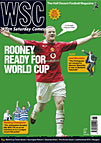 Verona were the last team outside the provinciale to win a Scudetto. But, as Luca Ferrato explains, referees had a big say
Verona were the last team outside the provinciale to win a Scudetto. But, as Luca Ferrato explains, referees had a big say
The long-term significance
This was the last time to date that the Serie A title went to a provinciale rather than one of the big city clubs. “It’s a Scudetto on leave,” Gianni Agnelli, the owner of Juventus would comment, joining the one won by Cagliari in 1970. Verona’s triumph was a watershed between the domination of Juventus and Roma in the early 1980s and the AC Milan-Napoli rivalry at the end of the decade. Maybe it’s just a coincidence, but this was also one of the few seasons in which match referees were selected by a random draw. Usually they are assigned to specific games by a technical committee, which has prompted claims that the big clubs get the officials they want, rather than those who might not be “pliable”.
Story of the season
On the opening day of the season, September 16, 1984, a large crowd was drawn to Verona’s Bentegodi stadium to see the Italian league debut of Diego Maradona, whose Napoli team were comfortably beaten 3-1 by a strong home side. The Veronese continued their impressive start with a 2-0 defeat of Juventus on the fifth round of matches and were unbeaten in their first 14 games before going down 2-1 at Avellino. Only Torino and Internazionale managed to keep up – the latter getting a hard-fought 1-1 draw at the Bentegodi in February, while Torino won there two months later. But Verona never lost their lead, clinching the title with a draw in Bergamo against Atalanta in the penultimate match. The key man for the Gialloblù was their coach, Osvaldo Bagnoli, who had astutely assembled a team of solid competitors, including several cast-offs from bigger clubs. Their biggest names were the two foreigners, both playing their first seasons in Serie A, Denmark striker Preben Elkjaer and the muscular West Germany midfielder Hans-Peter Briegel. Bagnoli’s organiser on the pitch was playmaker Antonio Di Gennaro, who was to appear in Italy’s 1986 World Cup team alongside Elkjaer’s young strike partner, former Juventus reserve Giuseppe “Nanu” Galderisi. The latter flopped at international level, however, failing to score in his ten appearances. It was a good season, too, for the rising Sampdoria, bankrolled by yachting magnate Paolo Mantovani, who in addition to a best-yet finish of fifth also beat AC Milan to take their first Italian Cup. Despite that defeat, it was an encouraging year for the pre-Berlusconi Milan of Ray Wilkins and Mark Hateley, after several seasons of turbulence including two relegations, one of which had been a by-product of the huge Totonero match-fixing scandal of 1980. Juventus, out of the title race from early on, won a first European Cup on an infamous night at the Heysel.
For the record books
On January 20, 1985, a freezing cold Sunday at the Stadio Friuli in Udine, Paolo Maldini made his debut for AC Milan as a second-half substitute. The teenager didn’t look out of place in a Serie A featuring several of the best players in the world at the time, including Platini, Zico and Karl‑Heinz Rummenigge.
Same place today
Only nine teams are still members of the enlarged Serie A. Verona and Torino have been reduced to scrapping for promotion from the second level. In recent years, the Gialloblù have been overtaken by Chievo, their much smaller neighbours from the other side of town, who were in the amateur divisions in 1985, turning pro a year later.
Moved furthest away
The Lazio that finished this season in last position were a club in perpetual financial crisis; former star Giorgio Chinaglia, back from the USA, was the latest failed owner. Napoli finished halfway down the table, though Maradona was the league’s third-top scorer with 14 goals. They are now in their second season in Serie C1. Como, a habitual member of Serie A in the 1980s – though not the place to go for goals as their stats show – are now mid-table at the fifth level, Serie D.
Went on to greater things
Roberto Donadoni ~ The exceptional midfielder made his league debut for Atalanta. Two years later he joined Milan, winning six Scudetti and three European Cups.
Michael Laudrup ~ The young Dane was in his second season with Lazio. In the summer of 1985 he moved to Juventus, then became a European champion with Johan Cruyff’s Barcelona in 1992.
Aldo Serena ~ was top scorer for Torino, then started his travels the next year, playing for Juventus and both Milan clubs. He is also remembered for his role in Italy’s 1990 World Cup team, specifically for missing a decisive penalty in the semi-final against Argentina.
Disappearing from view
Socrates ~ Brazil’s 1982 World Cup captain played 26 matches for Fiorentina but was widely judged to be an uninterested flop and headed for home.
Evaristo Beccalossi ~ This was the last season in Serie A for one of the best ever uncapped Italian footballers, a player of amazing technical skills. After six years at Internazionale, he ended his career at the top at Sampdoria.
Falcão ~ Another Brazilian World Cup star and an inspirational figure for Roma in their first title win in 41 years, in 1982-83. The “eighth king of Rome” also said goodbye to Italy at the end of the season.
From WSC 232 June 2006. What was happening this month